Basic Soap Recipe
“You don’t have to be sustainable with everything, but be sustainable with something”
To make a basic soap recipe with Olive Oil, Coconut Oil and Palm Oil, you will need the following ingredients and equipment:
Ingredients:
334g Olive Oil
330g Coconut Oil
330g Palm Oil
145g Sodium Hydroxide (lye): Required to saponify the oils and turn them into soap.
295g Distilled Water: Used to dissolve the lye
30g Fragrance Oil. We used Cocoa Cabana from Brightpack
It’s important to note that you cannot substitute oils out for other oils in a soap recipe. The lye is calculated based on the specific ingredients and oils listed.
Equipment:
- Safety equipment: Gloves, eye protection and an apron to protect yourself while handling lye.
- Heat resistant containers: Separate containers for measuring oils and lye.
- Heat resistant plastic spoons or spatulas for stirring and mixing.
- Scale to accurately measure your ingredients.
- Stick blender or hand whisk: For mixing the oils and lye together.
- Soap mould: Any heat resistant plastic container or silicone mold in which the soap will set and harden.
- Plastic wrap or parchment paper: To cover the soap mold during the hardening (saponification) process.
Once you have gathered all the ingredients and equipment, you can proceed with the soap-making process by following these general steps:
- Put on your safety equipment before handling the lye.
- Measure out the distilled water and lye separately. **Refer to lye safety guidelines
- Pour the lye into the distilled water and stir until dissolved.
- Set-aside close to an open window (or outside) to cool down to room temperature.
- In a separate container, measure out our oils separately.
- Melt down your hard oils in a double boiler or microwave with short bursts.
- Mix the oils together and put aside to cool down to room temperature.
- Once the lye solution and oils have both reached room temperature, slowly pour the lye solution into the oils while stirring continuously. A stick blender or hand whisk can be used for this step.
- Blend or whisk the mixture until it reaches a state called “trace”. Trace is reached when the mixture thickens to the point where small amount of soap dribbled on the surface leaves a faint trace or mark.
- Add your fragrance oils and mix thoroughly. Follow the guidelines for mixing the fragrance oils as set-up by the supplier.
- Pour the mixture into the soap mould and tap it gently on a surface to remove any air bubbles.
- Optional: Wait a few minutes for the batter to set-up and texture the top.
- Cover the mould with plastic wrap or parchment paper.
- Allow the soap to sit and harden in the mould for 24-48 hours.
- After the initial hardening period, remove te soap from the mould and cut it into bars or desired shapes.
- Place the cut bar soaps on a drying rack, shoebox or well-ventilated area and let them cure for 4-6 weeks. During the curing period, the water will continue to evaporate from the soap and create a hard, long-lasting bar.
Remember to always follow proper safety precautions and handle lye with care. It’s also essential to consult reliable soap-making references or resources for specific measurements, instructions and safety-guidelines.
Lye Safety Guidelines:
Handling lye requires proper safety precautions to protect yourself from potential hazards. Here are some important guidelines to follow when mixing lye:
- Protective Gear: Always wear rubber gloves, goggles, and a long-sleeved shirt or apron to shield your skin and eyes from lye contact. Additionally, consider wearing a mask to avoid inhaling lye fumes.
- Well-Ventilated Area: Mix the lye solution in a well-ventilated area, such as near an open window, or under a fume hood, to disperse any fumes that may be released during the process. Good ventilation helps minimise inhalation risks.
- Heat-Resistant Container: Use a container made of heat-resistant material, such as stainless steel or heat-resistant plastic, to mix the lye and water. Avoid using aluminium or reactive materials that may react with lye.
- Mixing Process: Follow these steps for mixing lye:
- Measure the exact amount of lye needed using a digital scale, ensuring accuracy.
- Pour the lye slowly and carefully into the water, never the other way around. Stir continuously as you add the lye to ensure it dissolves evenly.
- Stir until the lye is fully dissolved in the water. This may generate heat, so be careful when handling the container.
- Cleanup and Storage: After using lye, clean all utensils, containers and surfaces that came into contact with it thoroughly. Store lye in a secure, cool, and dry place, away from children and pets.
Remember, these guidelines are not exhaustive, and it’s essential to familiarise yourself with the manufacturer's lye safety information and procedures before working with lye.

